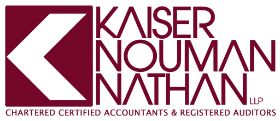If an individual sells his business, and if he qualifies for entrepreneurs’ relief, he is subject to capital gains tax (CGT) at the rate of 10%. But can he improve his position by using the sale proceeds to invest in the enterprise investment scheme (EIS)? This would allow him to defer his tax liability until such time that he disposes of his EIS investment.
Until December 2014, this was not a feasible proposition. While it was possible to use the EIS rules to defer the gain, this was at the expense of losing entrepreneurs’ relief when the tax was eventually brought back into charge. This is no longer the case – however, there is a trap for the unwary (note that the deferral is also possible under the social enterprise investment scheme. However, in this article, we shall confine ourselves to the EIS Scheme only).
How does EIS reinvestment relief work?
In order to shelter a CGT liability, an individual must subscribe for shares or securities in a company that satisfies the relevant conditions under the EIS rules (TCGA 1992, Sch 5B, para 1(2)).
The investment must be made within three years of the disposal of the assets giving rise to the CGT liability. Alternatively, the sale proceeds can be allocated to an EIS investment made within the previous year (TCGA 1992, Sch 5B, para 1(3)).
Reinvestment relief is given by deducting the acquisition cost of the EIS shares from the capital gain that is to be deferred. The result is:
- the amount of the sheltered gain is deemed not to have arisen at the time of the disposal of the original asset; but
- instead, the deferred gain is brought back into the tax net on a subsequent ‘chargeable event’ – usually when the shares are sold, but this can also include other cases, such as a failure of the company to satisfy the trading conditions (TCGA 1992, Sch 5B, paras 2-4).
The key question is: will the 10% entrepreneurs’ rate still be available when the original gain on the business sale is brought back into charge?
Procedure for claiming reinvestment relief – and a trap for the unwary
The usual time limit for claiming entrepreneurs’ relief is:
‘on or before the first anniversary of the 31 January following the tax year in which the disposal is made.’ (TCGA 1992, s 169M(3)).
For example, if a business is sold on 6 April 2017, a claim must be made by 31 January 2020.
However, claiming the 10% rate is fatal if one wishes to defer the tax under the EIS rules. This is because of a specific provision that states that one cannot reinvest a gain that is already subject to the 10% entrepreneurs’ rate (TCGA 1992, Sch 5B, para 1(5A)).
But we have already stated that it is possible to both defer the gain and claim the 10% rate – how then, is this achieved?
The answer lies in not claiming entrepreneurs’ relief straight away. This is the correct procedure (TCGA 1992, s 169U)):
- defer the gain by subscribing for EIS shares and making a claim for reinvestment relief; and
- when the gain is eventually brought back into charge, then – and only then – claim entrepreneurs’ relief (TCGA 1992, s 169U(5)). The time limit is the first anniversary of the 31 January following the tax year in which the deferred gain is brought back into the tax net.
Practical Tip:
The ability to defer tax and benefit from the 10% entrepreneurs’ rate is an attractive proposition. However, the tax advantages must be balanced against the investment risk. EIS is not a safe haven to park one’s funds, and capital gains reinvested in an EIS company could be lost if the investment goes bad. To add insult to injury, the tax on the deferred gain still has to be paid.


Recent Comments